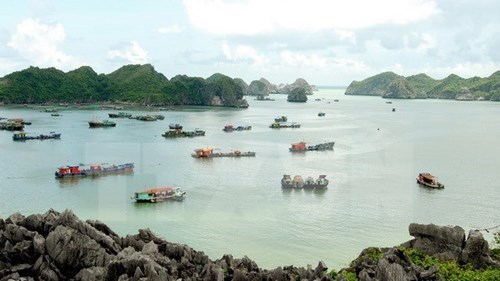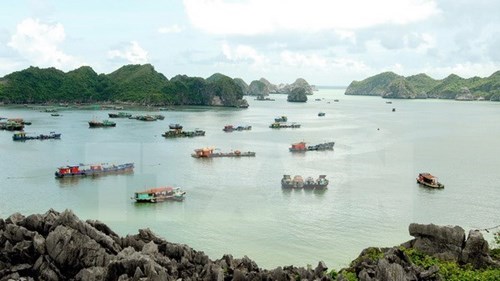
Vietnam’s tourism sector is likely to fulfill the target set by Prime Minister Nguyen Xuan Phuc of welcoming 13 million international visitors in 2017.
Vietnam served more than 8.47 million
foreign tourists in the first eight months of this year and grossed VND 335.8
trillion (USD 14.7 billion) in revenue, year-on-year increases of 29.7 percent
and 26.7 percent, respectively.

Cat Ba Island in Northern port city of Hai Phong. (Photo for
illustration)
Director of the Vietnam National
Administration of Tourism Nguyen Van Tuan said while the number of
international visitors to other countries in July and August declined such as
the Republic of Korea (down 40 percent), Thailand (down 9.5 percent), Malaysia
(down 7.5 percent), and the Philippines (down 38 percent), Vietnam attracted
over 1.2 million foreigners, a monthly increase of 18.5 percent.
Vietnam ranks 67th among 136 economies in
the Travel & Tourism Competitiveness Index 2017, up eight places compared
to the same period in 2015.
Tuan, however, admitted that there are
still challenges to ensuring sustainable tourism development, including low
infrastructure quality, inadequate Government spending on tourism, diminishing
natural resources and diseases.
He suggested tapping natural resources to
build sea-island, ecological, and cultural tourism products and services.
The world’s largest tourism website
TripAdvisor announced a list of ten most attractive spots in Vietnam voted by
tourists. Notably, the Central province of Quang Binh climbed to fourth in the
list, behind Hoi An, Hanoi and Ho Chi Minh City only.
According to TripAdvisor, Quang Binh was
described as a heaven for exploration and experiences with various tourism
destinations and routes such as Son Doong cave, Tu Lan cave system, Da Nhay
beach and Phong Nha- Ke Bang cave, among others.
Source: PANO
Spanning thousands of hectares and winding gracefully along mountain slopes, hillsides, and riverbanks, the terraced rice fields of Lac Son District present a stunning and captivating beauty. This region, renowned for its remarkable terraced landscapes, is also the centre of Hoa Binh Culture known for numerous archaeological sites.
The life of Mong people in Hang Kia and Pa Co communes of Mai Chau district has improved much thanks to tourism development.
The man-made Hoa Binh Lake, with a water surface area of approximately 9,000 hectares and a capacity of 9.45 billion cubic meters, stretches over 200 kilometers from Hoa Binh to Son La provinces. With the goal of developing into a national tourism area, the Hoa Binh Lake tourism area is expected to not only become the largest tourism centre in the province but also one of the 12 key tourist destinations in the northern midland and mountainous region of Vietnam.
Da Bia hamlet, now Duc Phong, in Tien Phong commune, Da Bac district, was once almost isolated from the outside as the only way to the hamlet was to get a boat ride across the Hoa Binh reservoir. However, as its tourism potential has been unleashed, the hamlet has established itself as one of the most attractive destinations on the tourism map. It has even received the ASEAN Community-Based Tourism Awards in 2019.
In the first 9 months of 2024, Mai Chau district, Hoa Binh province welcomed over 684 thousand visitors to visit and relax. In which, over 516 thousand domestic visitors and more than 168 thousand international visitors. Total revenue from tourism is estimated at over 821 billion VND.
Da Bac district, bestowed with stunning landscapes, is developing ecological and resort tourism offerings. Several tourist sites, put into operation this year, has attracted throngs of high-spending and young domestic visitors.



